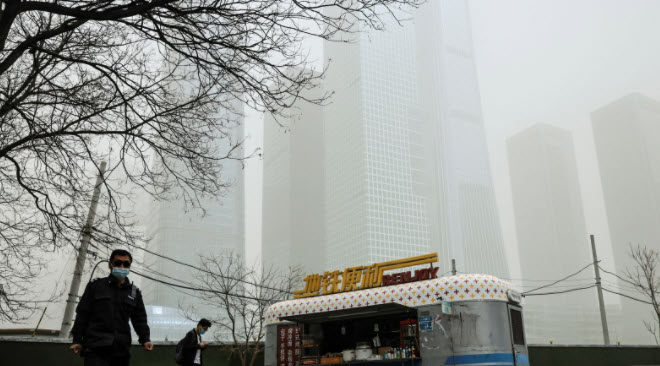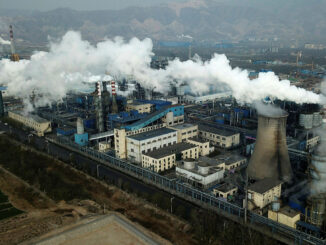
China’s worst sandstorm in a decade is threatening its renewable energy output, which will likely boost coal consumption even as the traditional April-May lull for heating demand approaches.
At least 12 provinces in north China have been affected since the start of this week. The sandstorm has disrupted China’s solar and wind power generation in these regions, which will likely push utilities towards thermal coal, market participants said. Utilities may have factored in the impact of sandstorms that are typical around this time of the year, but the intensity and uncertainty of duration this time may have caught some off-guard.
Wind power has been an increasingly critical component in China’s renewable energy mix. The country produced 7,417 TWh of electricity in 2020, an increase of 2.7pc on the year. Wind power accounted for 414.6 TWh, an increase of 10.5pc on the year, according to data from the national bureau of statistics (NBS). But the increase in wind power during January-February gained pace, rising by 49pc on the year, significantly higher than all other electricity sources, latest NBS data show.
Solar power has also gained prominence as a renewable energy source. China produced 12.55 TWh of electricity from solar sources in 2020, an increase of 14.3pc on the year, according to NBS data. January-February solar output rose by 25.8pc on the year. The NBS typically lumps January and February data together because of industrial disruptions during the lunar new year holiday.
The sandstorm is also having a limited impact in disrupting China’s coal output. Over 70pc of China’s coal is produced in the three northern provinces of Inner Mongolia, Shanxi and Shaanxi, all of which are affected by the storm. Most coal mines are operating as usual, but coal logistics have been hampered by visibility restrictions on roads. Some producers may be planning to cut production to avert any potential price declines as stockpiles at mine mouths have increased because of fewer trucks collecting coal, market participants said.
Prices high despite impending lull period
China is heading into the traditional lull for domestic coal consumption that starts in April, when heating demand typically slumps with the onset of milder temperatures. But domestic spot prices remain relatively high compared with the same time last year, supported by a multitude of factors including the weaker outlook for renewable energy. Chinese NAR 5,500 kcal/kg was last assessed by Argus at 628.08 yuan/t ($96.86/t) fob Qinhuangdao port on 12 March with some cargoes trading yesterday at Yn635/t fob north China ports, compared with Yn559.33/t ($79.88/t) on 13 March last year.
Scheduled maintenance on the critical coal-transporting Daqin railway during 6-30 April will also curtail available supplies, supporting the market in April. A recent increase in cement prices in many parts of south China suggests that the coal-consuming cement manufacturing sector in these regions is rebounding, which will also support industrial demand for thermal coal.
April-May is typically a time when Chinese coal importers stock up on seaborne cargoes loading in May-June to meet air conditioning demand during the summer.
But summer restocking this year could take a different direction due to a surge in international dry bulk freight costs since February on strong Chinese demand for grain shipments. This has significantly narrowed the arbitrage opportunity for seaborne coal sold to China and there is also uncertainty over how long the surge in freight rates will persist. This means that Chinese utilities will have to plan their summer restocking around domestic supply, which could support spot prices, unless freight rates ease soon.
Summer restocking centered on domestic stocks will mean that China’s domestic supplies will be below previous years heading into the winter restocking season during the third quarter of the year. This could pressure Beijing into importing more coal later this year to avert the coal shortages it experienced in late 2020 when domestic supplies were low at a time when heating demand surged.
By Kelvin Leong – Argus



